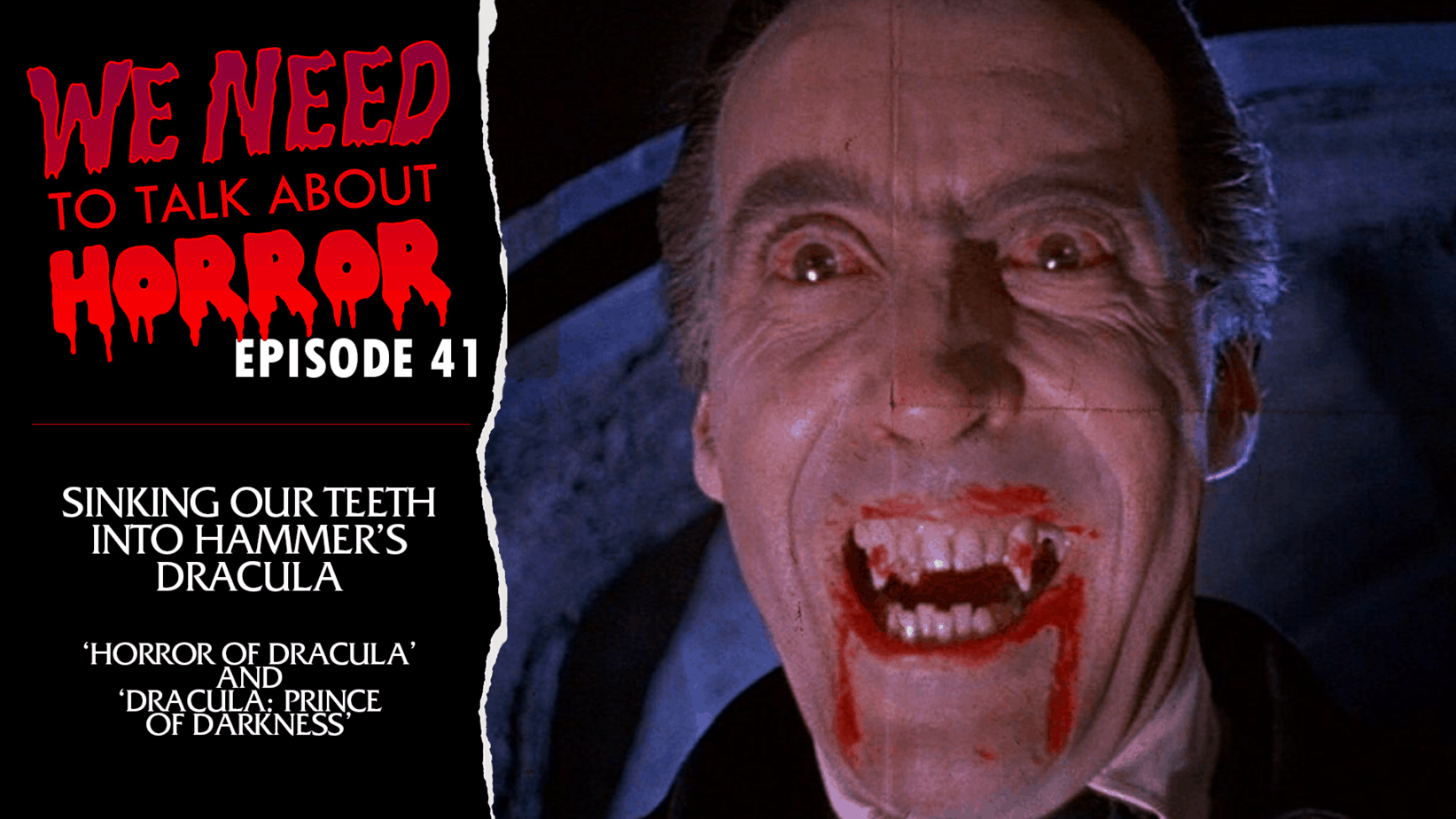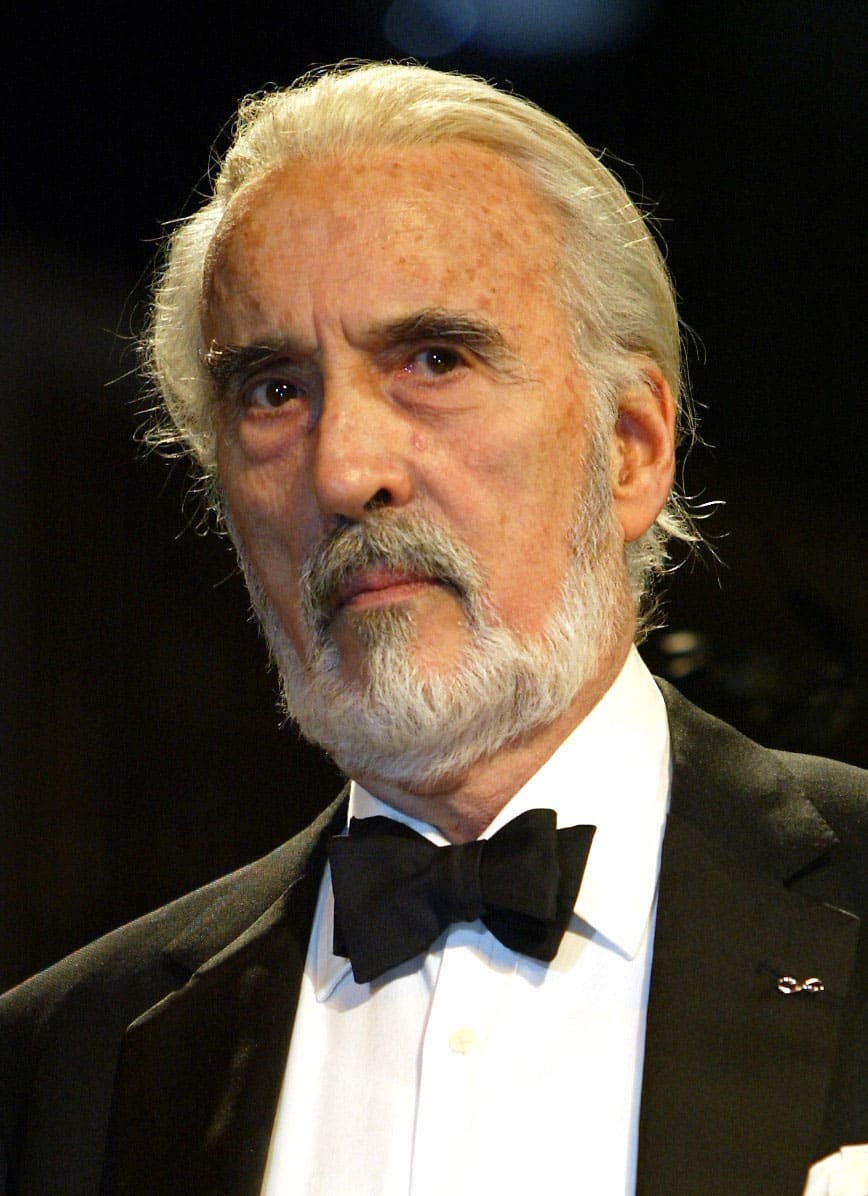Hammer Horror- Britain’s Studio of Blood: HORROR OF DRACULA
 As I have said in the first article of this series, all October long I will be taking a look at the films that defined one studio into the leader of British horror. Hammer was once a name that brought fear and joy to the big screen for horror fans. Martin Scorsese has stated, “… if we saw that logo of Hammer Films we knew it would be a very special picture.” Now that company has returned to the spotlight with Let Me In. The studio has shown vampires in many different undead states prior to their vision of Abby in Let Me In. Today, in part two of an ongoing series, we take a look at their first telling of the vampire myth: Horror of Dracula. The film not only re-iterated Hammer’s success in the horror genre (Curse of Frankenstein planted that seed) but catapulted Christopher Lee as a leading man with bite.
As I have said in the first article of this series, all October long I will be taking a look at the films that defined one studio into the leader of British horror. Hammer was once a name that brought fear and joy to the big screen for horror fans. Martin Scorsese has stated, “… if we saw that logo of Hammer Films we knew it would be a very special picture.” Now that company has returned to the spotlight with Let Me In. The studio has shown vampires in many different undead states prior to their vision of Abby in Let Me In. Today, in part two of an ongoing series, we take a look at their first telling of the vampire myth: Horror of Dracula. The film not only re-iterated Hammer’s success in the horror genre (Curse of Frankenstein planted that seed) but catapulted Christopher Lee as a leading man with bite.
The Beginning Of Dracula’s Rise From The Grave
After the huge success of Curse of Frankenstein, it was almost inevitable that Hammer would begin their version of Dracula. After Curse, the studio put out a series of films including Quatermass 2 (a sequel to the Quatermass Xperiment) and The Abominable Snowman, but neither of these reached the horrors or carried the success that Frankenstein brought. Like Curse, Hammer initially encountered some problems from Universal for making a Dracula film. Eventually the tiff was settled and Hammer was able to tell Bram Stoker’s version of the story; Tod Browning’s Universal film is largely based on a stage production written by Hamilton Deane and John L. Balderston. In order to achieve the success of Curse, Hammer assembled much of the same crew that worked on that project, including writer Jimmy Sangster and director Terence Fisher. Sangster’s script reduces Stoker’s novel to the bare-bones cutting out scenes and characters, including Renfield in the insane asylum. The film was made in twenty-five days on a miniscule budget, shot mainly on a sound stage. Integral to the film was the director and the leads, Peter Cushing (Professor Van Helsing) and Christopher Lee (Dracula). The three had worked on Curse together prior, and their relationship with one another only made this film even better. Known for improvisation, it was Cushing who came up with the idea to wield the candle sticks in a cross at the climax of the film. This was the first film that Lee donned the vampire cloak. He went on to fill the coffin he created six more times after this film. As they had hoped, Horror of Dracula was a huge success for Hammer in 1958. It proved that the Hammer family of actors, artists, and technicians could all work together to create an exciting piece of cinema that rivaled the original Universal monsters. This family element, carried through with all of the horror productions that followed.
Horror of Dracula (1958)
The film follows Johnathan Harker as he ventures out in his pursuit of Dracula. Acting as an innocent librarian to the Count, Harker plans to end the undead life of the evil creature while he is sleeping. Unfortunately for Harker, Dracula and Dracula’s bride have other plans for the amateur vampire killer. After word gets back to Harker’s fiancee Lucy, Van Helsing and Lucy’s brother, Arthur, set out to end the reign of terror.
The opening pounding music and blood-red letters set to an image of a castle adorned with gargoyles certainly sets a tone for the film you are about to witness. Gone is Dracula turning into a bat. Here you have stakes into chests, blood spurts, crosses burning flesh, and sunlight turning vampires into dust. Hammer knew what would get butts into seats. Immediately you will also notice that the set design is much different than you would expect. Like Universal’s Dracula, you assume that Dracula’s castle would be old and musty and full of cobwebs. Instead, it is more Medieval and ornate in its appearance. Like the castle, Dracula himself is also more regal and not as threatening upon first glance. Lee plays him as if he has a rich, distinguished, and cultured intellect. Although the blood-sucking beast does not have much screen-time, you feel his ever present threat throughout the movie. When he unleashes his fangs though, he is certainly less cartoon- like than Bela Lugosi’s Dracula. Though Lee steals the show, Peter Cushing and Michael Gough (you may remember him as Alfred, Bruce Wayne’s butler in Tim Burton’s Batman) certainly don’t slouch in carrying the majority of the film. The middle of the films is filled with moody shots of leaves rustling and foggy cemeteries. The real meat of the film is the opening twenty minutes with Harker and Dracula and the final battle between Helsing and Dracula. Both scenes certainly amp up the gore of the film as well as Fisher’s distinguished directing flair. For horror enthusiasts, this is a must-see to witness the more dark and sexual side of the Dracula character. Not only is it a work that showcased the talents of Peter Cushing and Christopher Lee, but it is one of the best contributions to the Dracula mythos. We will return to the character Dracula, later this month.
Throughout the month of October, you can watch many of these Hammer horror classics on Turner Classic Movies. For their complete schedule, click here.





